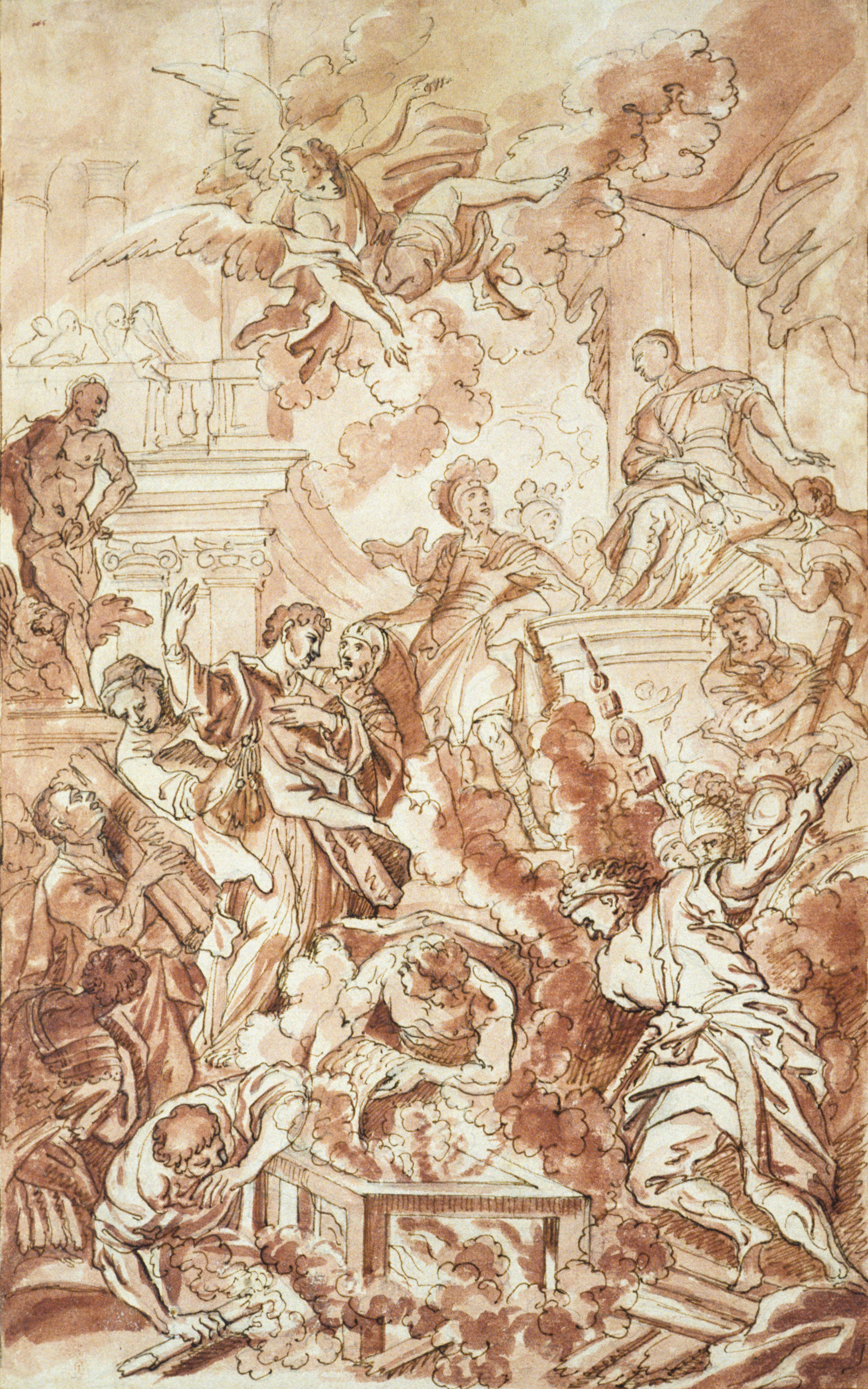Religion : Martyrdom of Saint Lawrence
This 17th century Italian ink and ink wash painting is of the martyrdom of San Lorenzo, or St. Lawrence in English, presumably a preparatory drawing for an altarpiece. Not much is known about this piece, but it is characteristically Baroque, evident through the religious content and stylistic effects. In the piece there is a strong diagonal emphasis, creating a dynamic composition and bringing the viewer’s attention to the foreground of the piece where San Lorenzo is emotionally preaching the word of God. During this time it was important to show the emotion of figures through their facial expressions as it was thought to show their character. Although the painter is unknown, influences from the Carracci school can be seen in the techniques used in the creation of the ink wash, such as the pen lines and use of ink washes to create highlights and shadows. The iconic grill serves as an immediate indicator of the martyrdom of St. Lawrence, a subject that received particular attention in the Baroque period. The Counter-Reformation Church used art to evoke strong emotional reactions in the masses to inspire devotion, fostered by easily understood subject matter and emotional drama. Martyrdoms thus became very popular for their dramatic, emotional qualities- especially that of St. Lawrence, a Roman deacon famous for charitable acts and his respect for the poor masses, messages that were both important to the Church and well-received by the people. The iconic nature and dramatic gruesomeness of the mode of his execution- on a flaming gridiron- made it ideal subject matter for commissions from the Counter-Reformation Church. Saint Lawrence, standing fearless before his gruesome fate, beckons to the heavens where an angel swoops into the composition. This is a motif common throughout Baroque representations of martyrdoms, visually representing religious devotion motivated by divine reward in spite of worldly inconvenience or hardship. This preparatory drawing is a prime example of the visionary experience desired in religious Baroque art and of the heightened role of saints as intercessors in Counter-Reformation Europe.

